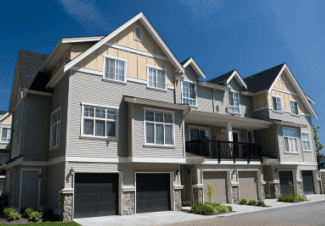The Housing Market Isn’t In Correction Territory Yet
 A very tight supply of single-family home sales inventory will continue to drive pricing.
A very tight supply of single-family home sales inventory will continue to drive pricing.
While single-family home values are enjoying dizzying highs, experts aren’t predicting a massive correction in the style of the Great Financial Crisis.
Single-family home prices are up 18% year-over-year as of November 2021, but prices are “nowhere near” the “extreme mispricing” of 2005, according to a new analysis from Amherst. There’s also more of an even split of overvalued and undervalued markets today versus in 2005, and the level of overvaluation is lower.
Amherst researchers also predict that a very tight supply of single-family home sales inventory will continue to drive pricing. The total stock of for-sale inventory started this year 21% below 2020 levels, and the inventory gap widened to -29% by March 2021. And while year-over-year declines have remained steady at around 17%, supply is historically tight.
Sales velocity also climbed in 2021 to “unseen levels” and was uniformly high across US markets, with each of the major cities Amherst tracks “handily” outperforming 2019 averages. Velocity also climbed in 2021 across all asset tiers and increased most in the top price and size tiers. And while rising interest rates remain a source of concern, Amherst notes that home prices have historically climbed faster in rising-rate environments. In 91% of the instances in Amherst’s data since 2000, prices have risen with a trailing 12-month 0-1% increase in 10-year Treasury rates.
Well-documented shortages have kept construction from keeping pace with supply: Amherst estimates that new single-family home inventory is down more than 30% year-over-year, despite higher completion volumes. The construction market is down an estimated 1.5 million workers short of what is required to keep pace with housing construction activity, a deficit Amherst says will likely delay completion rates.
On the leasing side, very high absorption will make it difficult for inventory to normalize, the firm predicts. Amherst measures leasing velocity as the portion of listings leased within the first 30, 45 and 60 days, and notes that the metric jumped significantly in 2020 and 2021.
Source: Globe St















 Accessibility
Accessibility